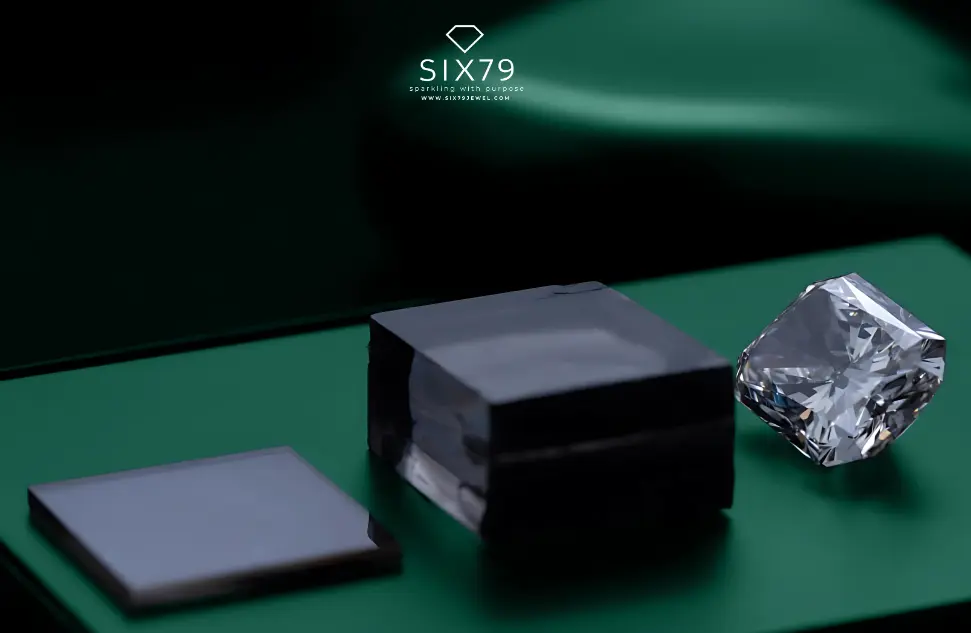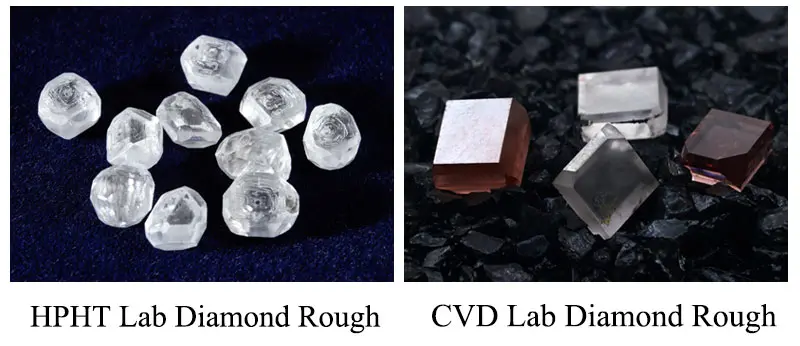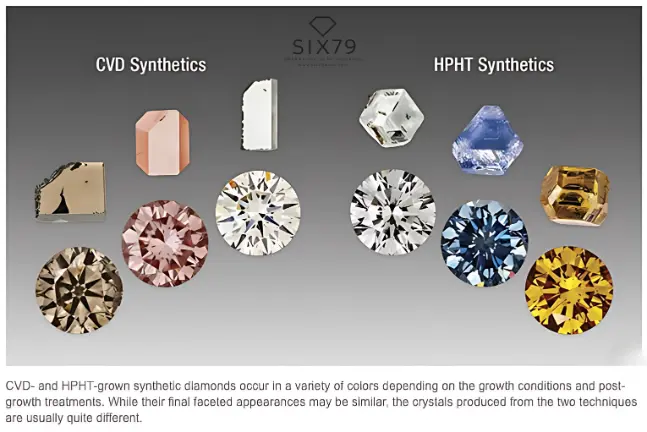The Science Behind Lab-Grown Diamonds: HPHT vs. CVD
Lab-grown diamonds are 100% real diamonds – just created in a lab instead of being mined. Two advanced methods are used to grow them:
Introduction: The technology behind lab-grown diamonds
👉 In the world of modern luxury, science is redefining brilliance. Lab-grown diamonds are not imitations—they are real diamonds, created using advanced technology that replicates the natural conditions under which diamonds form beneath the Earth’s surface.
👉 Using cutting-edge methods like HPHT (High Pressure High Temperature) and CVD (Chemical Vapor Deposition), scientists can grow diamonds that are chemically, physically, and optically identical to mined diamonds—minus the environmental and ethical concerns.
👉 These innovations have made it possible to offer diamonds that sparkle with purity, sustainability, and transparency—a perfect blend of nature and technology.
What is HPHT (High-Pressure High-Temperature)
HPHT is one of the earliest and most trusted methods used to create lab-grown diamonds. It replicates the natural conditions inside the Earth where diamonds are formed—extreme heat and intense pressure.
🔬 How It Works:
- A diamond seed is placed in a chamber with pure carbon.
- The chamber is subjected to pressures above 5 GPa and temperatures over 1,400°C.
- The carbon melts and crystallizes around the seed, forming a diamond.
✨ Key Features:
- Produces high-clarity diamonds, often with a yellowish or bluish hue.
- Can create large single crystals.
- Commonly used to enhance color in existing diamonds as well.
✅ Best For: Fancy colored diamonds, affordable brilliance, and industrial-grade stones.
What is CVD (Chemical Vapor Deposition)
CVD is a modern, highly precise method of growing lab-grown diamonds—atom by atom. It creates diamonds that are often purer than natural ones, with fewer impurities and excellent optical quality.
🔬 How It Works:
- A thin diamond seed is placed in a vacuum chamber.
- The chamber is filled with carbon-rich gases like methane and hydrogen.
- Using microwave or plasma technology, the gases are activated, breaking down and releasing carbon atoms.
- These carbon atoms settle on the seed and grow into a diamond, layer by layer.
✨ Key Features:
- Produces Type IIA diamonds, which are extremely rare and pure.
- Allows fine control over growth, ensuring consistent quality.
- Ideal for colorless or near-colorless diamonds.
✅ Best For: High-purity white diamonds and sustainable luxury.
Comparing the two processes
Both HPHT (High Pressure High Temperature) and CVD (Chemical Vapor Deposition) are advanced technologies used to create real diamonds in a lab.
Side-by-Side Comparison:
|
Feature |
HPHT |
CVD |
|
Full Form |
High Pressure High Temperature |
Chemical Vapor Deposition |
|
Inspired By |
Earth’s natural diamond-forming environment |
Modern plasma science |
|
Technology Used |
Extreme pressure + high heat |
Carbon-rich gas + plasma/vacuum |
|
Growth Direction |
From the center outward |
Layer by layer (top-down) |
|
Ideal For |
Fancy colored diamonds, large crystals |
High-purity white diamonds |
|
Purity |
Slightly lower (may contain metal inclusions) |
Extremely high (Type IIA possible) |
|
Common Use |
Colored gems, industrial diamonds |
Jewelry-grade diamonds |
|
Clarity & Quality |
Very good, can have inclusions |
Exceptional purity, fewer inclusions |
|
Speed |
Slightly faster |
More controlled, slower growth |
Quality differences & industry standards
👉 Quality Differences & Industry Standards
👉 Not all lab-grown diamonds are the same. The growth method—HPHT or CVD—directly affects quality factors like color, clarity, and purity. Here’s how the two compare under industry-recognized standards:
👉 HPHT vs. CVD: Quality at a Glance
|
Quality Aspect |
HPHT Diamonds |
CVD Diamonds |
|
Color |
May exhibit yellow or blue hues (due to impurities) |
Often more colorless or near-colorless |
|
Clarity |
Can have metallic inclusions from catalysts |
Typically cleaner, with minimal inclusions |
|
Purity |
Often Type Ib or IIb |
Frequently Type IIa—the purest diamond type |
|
Cut Symmetry |
Excellent with expert cutting |
Often sharper facet edges due to higher material purity |
|
Fluorescence |
Sometimes moderate to strong |
Usually faint or none |
Industry Certification Standards
All reputable lab-grown diamonds are evaluated by the same global gemological labs that grade mined diamonds:
GIA – Gemological Institute of America
IGI – International Gemological Institute
GCAL – Gem Certification & Assurance Lab
These reports detail:
Diamond’s 4Cs (Cut, Color, Clarity, Carat)
Growth method (CVD or HPHT)
Any post-growth treatments
What This Means for You
- CVD Diamonds: Preferred for ultra-pure, white stones with fewer inclusions.
- HPHT Diamonds: Ideal for larger or fancy-colored stones, often at competitive pricing.
- Always check for certification to ensure transparency, traceability, and trust.
Conclusion: Which method produces better diamonds?
The answer depends on what you're looking for.
Both HPHT and CVD methods produce real, certified diamonds—identical to mined ones in beauty and structure. However, each method offers unique advantages:
- ✅ CVD Diamonds are often purer, clearer, and more consistent, making them ideal for those who want colorless perfection with minimal inclusions.
- ✅ HPHT Diamonds can deliver larger sizes and vibrant fancy colors, and are excellent for those seeking affordable brilliance or colored gems.
At SIX79, we believe the “better” diamond is the one that best fits your values, vision, and style. That’s why we offer handpicked lab-grown diamonds from both CVD and HPHT technologies—graded, certified, and chosen for their exceptional sparkle.


